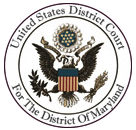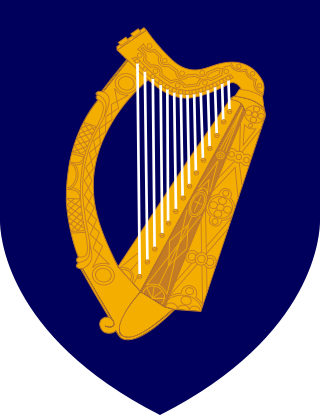
An affidavit is a written statement voluntarily made by an affiant or deponent under an oath or affirmation which is administered by a person who is authorized to do so by law. Such a statement is witnessed as to the authenticity of the affiant's signature by a taker of oaths, such as a notary public or commissioner of oaths. An affidavit is a type of verified statement or showing, or in other words, it contains a verification, which means that it is made under oath on penalty of perjury, and this serves as evidence for its veracity and is required in court proceedings.
Hearsay is testimony from a witness under oath who is reciting an out-of-court statement that is being offered to prove the truth of the matter asserted.
Crawford v. Washington, 541 U.S. 36 (2004), is a landmark United States Supreme Court decision that reformulated the standard for determining when the admission of hearsay statements in criminal cases is permitted under the Confrontation Clause of the Sixth Amendment. The Court held that prior testimonial statements of witnesses who have since become unavailable may not be admitted without cross-examination.
First adopted in 1975, the Federal Rules of Evidence codify the evidence law that applies in United States federal courts. In addition, many states in the United States have either adopted the Federal Rules of Evidence, with or without local variations, or have revised their own evidence rules or codes to at least partially follow the federal rules.
The law of evidence, also known as the rules of evidence, encompasses the rules and legal principles that govern the proof of facts in a legal proceeding. These rules determine what evidence must or must not be considered by the trier of fact in reaching its decision. The trier of fact is a judge in bench trials, or the jury in any cases involving a jury. The law of evidence is also concerned with the quantum (amount), quality, and type of proof needed to prevail in litigation. The rules vary depending upon whether the venue is a criminal court, civil court, or family court, and they vary by jurisdiction.
A learned treatise, in the law of evidence, is a text that is sufficiently authoritative in its field to be admissible as evidence in a court in support of the contentions made therein.
A present sense impression, in the law of evidence, is a statement made by a person that conveys his or her sense of the state of an event or the condition of something. The statement must be spontaneously made while the person was perceiving the event or condition, or "immediately thereafter." The permissible time lapse between event and statement may range from seconds to minutes, but probably not hours. The subject matter and content of the statement are limited to descriptions or explanations of the event or condition, therefore opinions, inferences, or conclusions about the event or condition are not present sense impressions. An example of present sense impression is of a person saying, "it's cold" or "we're going really fast".
An excited utterance, in the law of evidence, is a statement made by a person in response to a startling or shocking event or condition. It is an unplanned reaction to a "startling event". It is an exception to the hearsay rule. The statement must be spontaneously made by the person while still under the stress of excitement from the event or condition. The subject matter and content of the statement must "relate to" the event or condition in question. The statement could be a description or explanation, or an opinion or inference. Examples include: "Look out! We're going to crash!" or "I think he's crazy. He's shooting at us!" The basis for this hearsay exception is the belief that a statement made under the stress is likely to be trustworthy and unlikely to be a premeditated falsehood. Compared to present sense impression, excited utterance is broader in scope for permitting a longer time lapse between event and statement, and a wider range of content in the statement.
Witness impeachment, in the law of evidence of the United States, is the process of calling into question the credibility of an individual testifying in a trial. The Federal Rules of Evidence contain the rules governing impeachment in US federal courts.
An admission in the law of evidence is a prior statement by an adverse party which can be admitted into evidence over a hearsay objection. In general, admissions are admissible in criminal and civil cases.
Hearsay, in a legal forum, is an out-of-court statement which is being offered in court for the truth of what was asserted. In most courts, hearsay evidence is inadmissible unless an exception to the hearsay rule applies.
The hearsay provisions of the Criminal Justice Act 2003 reformed the common law relating to the admissibility of hearsay evidence in criminal proceedings begun on or after 4 April 2005.
In the law of evidence, a dying declaration is testimony that would normally be barred as hearsay but may in common law nonetheless be admitted as evidence in criminal law trials because it constituted the last words of a dying person. The rationale is that someone who is dying or believes death to be imminent would have less incentive to fabricate testimony, and as such, the hearsay statement carries with it some reliability.
In United States law, a declarationagainst interest is an exception to the rule on hearsay in which a person's statement may be used, where generally the content of the statement is so prejudicial to the person making it that they would not have made the statement unless they believed the statement was true. For example, if a driver in an automobile accident boasts publicly that they were speeding, it may represent a legal admission of liability. The Federal Rules of evidence limit the bases of prejudices to the declarant to tort and criminal liability. Some states, such as California, extend the prejudice to "hatred, ridicule, or social disgrace in the community." It is analogous to the criminal equivalent, the statement against penal interest which is a statement that puts the person making the statement at risk of prosecution. In the United States federal court system and many state courts, statements against interest by individuals who are not available to be called at trial may be admitted as evidence where in other circumstances they would be excluded as hearsay.
Prior consistent statements and prior inconsistent statements, in the law of evidence, occur where a witness, testifying at trial, makes a statement that is either consistent or inconsistent, respectively, with a previous statement given at an earlier time such as during a discovery, interview, or interrogation. The examiner can impeach the witness when an inconsistent statement is found, and may conversely bolster the credibility of an impeached witness with a prior consistent statement.
The business records exception to the U.S. hearsay rule is based on Rule 803(6) of the Federal Rules of Evidence (FRE). It is sometimes referred to as the business entry rule.

Lorraine v. Markel American Insurance Company, 241 F.R.D. 534, is a case in which a landmark decision about the admissibility and authentication of digital evidence was set down in the form of a 100-page opinion by Magistrate Judge Paul W. Grimm.
Tome v. United States, 513 U.S. 150 (1995), was a case decided by the Supreme Court of the United States that held that under Federal Rules of Evidence Rule 801(d)(1)(B), a prior consistent statement is not hearsay only if the statement was made before the motive to fabricate arose.
The South African law of evidence forms part of the adjectival or procedural law of that country. It is based on English common law.

DPP v McLoughlin, [2009] IESC 65, was an Irish Supreme Court case, which confirmed that when objecting to the granting of bail where alleged witness intimidation is raised, the judge in the application should explicitly address the likelihood, extent, and impact of intimidation. This case specifically raised the issue of hearsay in considering potential witness intimidation and in the context of a bail decision. The decision of Denham J, goes on to state in regards to hearsay that: "The relevance and weight of such evidence is a matter to be determined by the trial judge and that a judge should be careful on the weight he or she places on such evidence". The case also had implications for bail applications because the Supreme Court found that a high case load for the High Court had implications on bail decisions.


